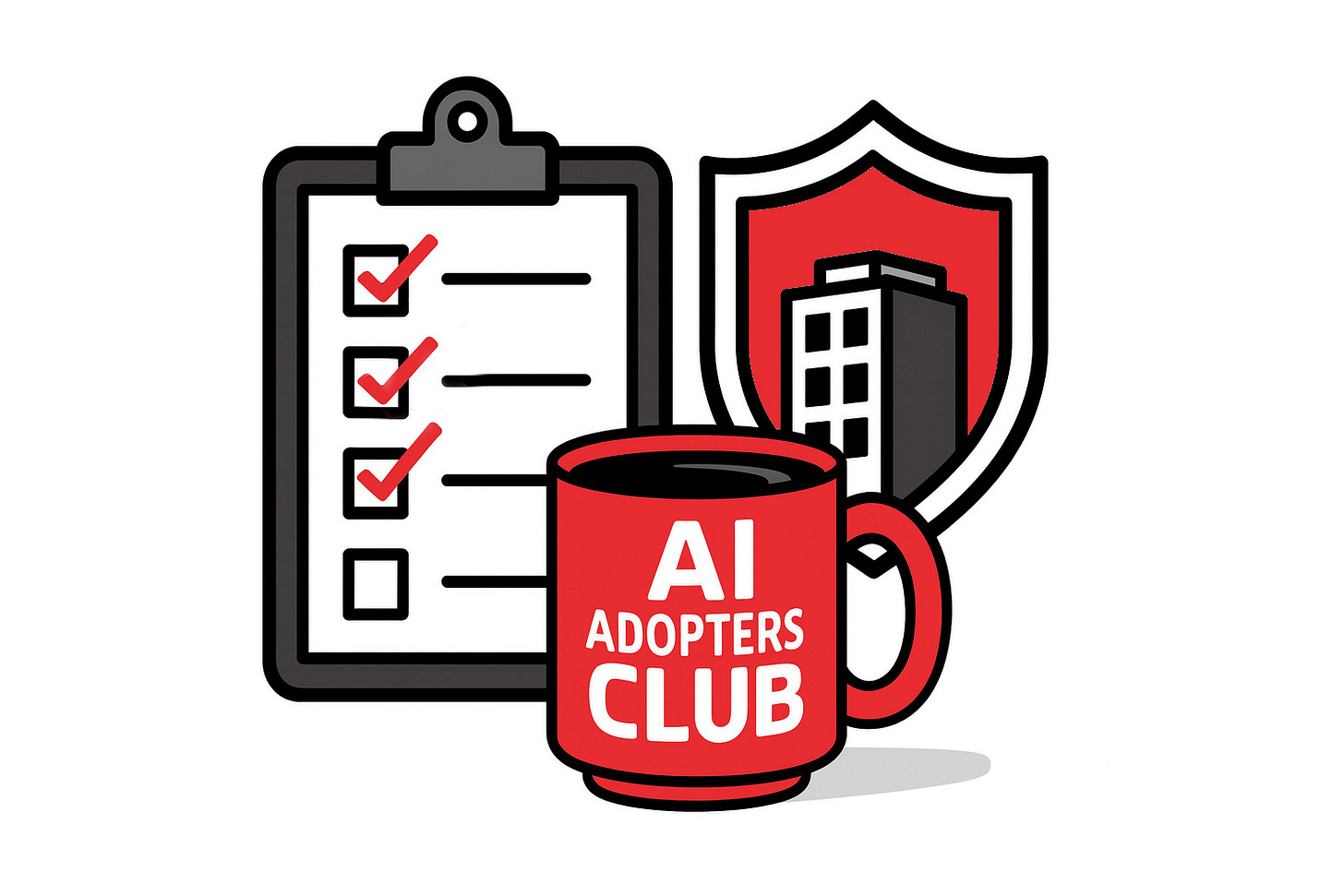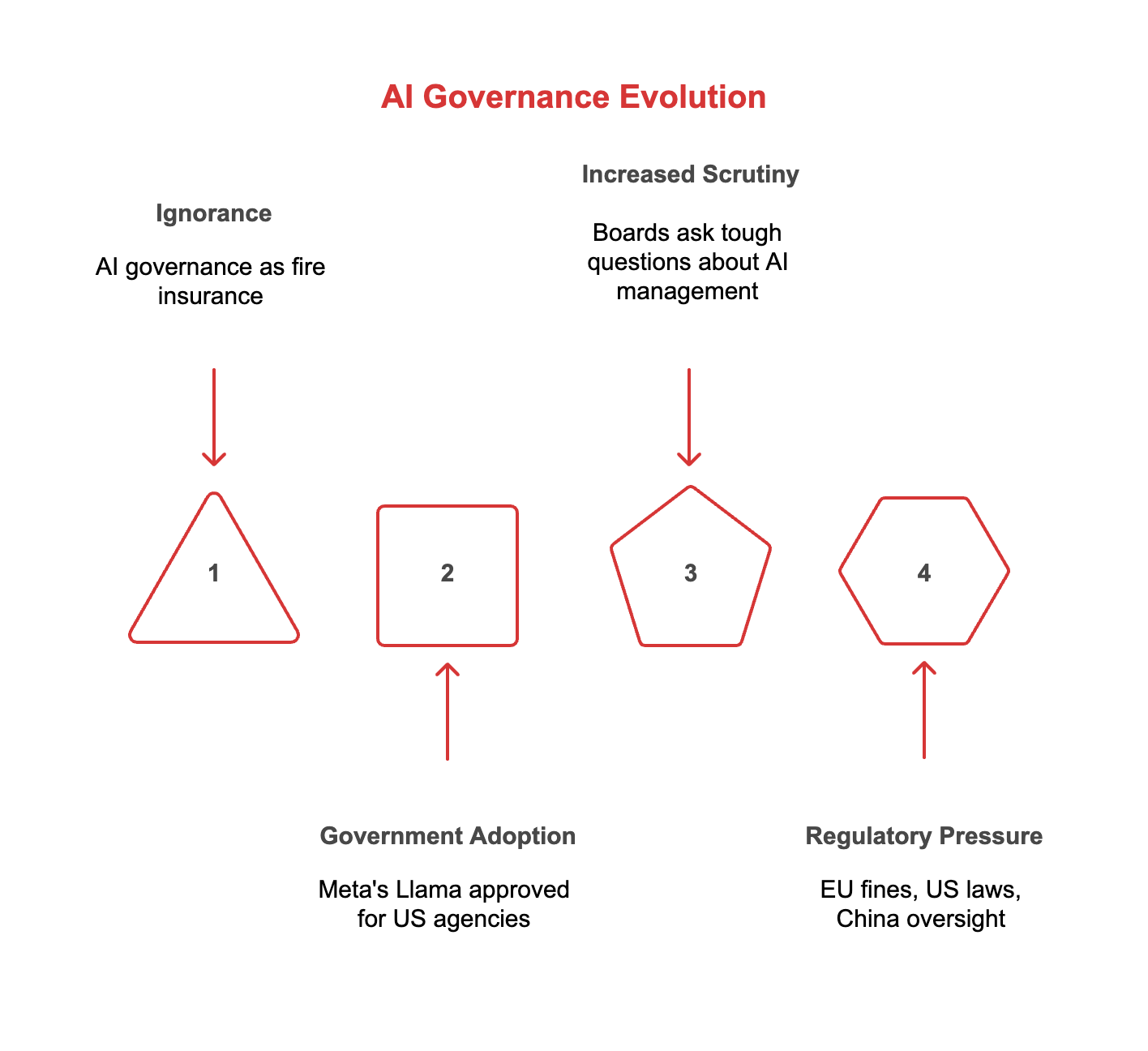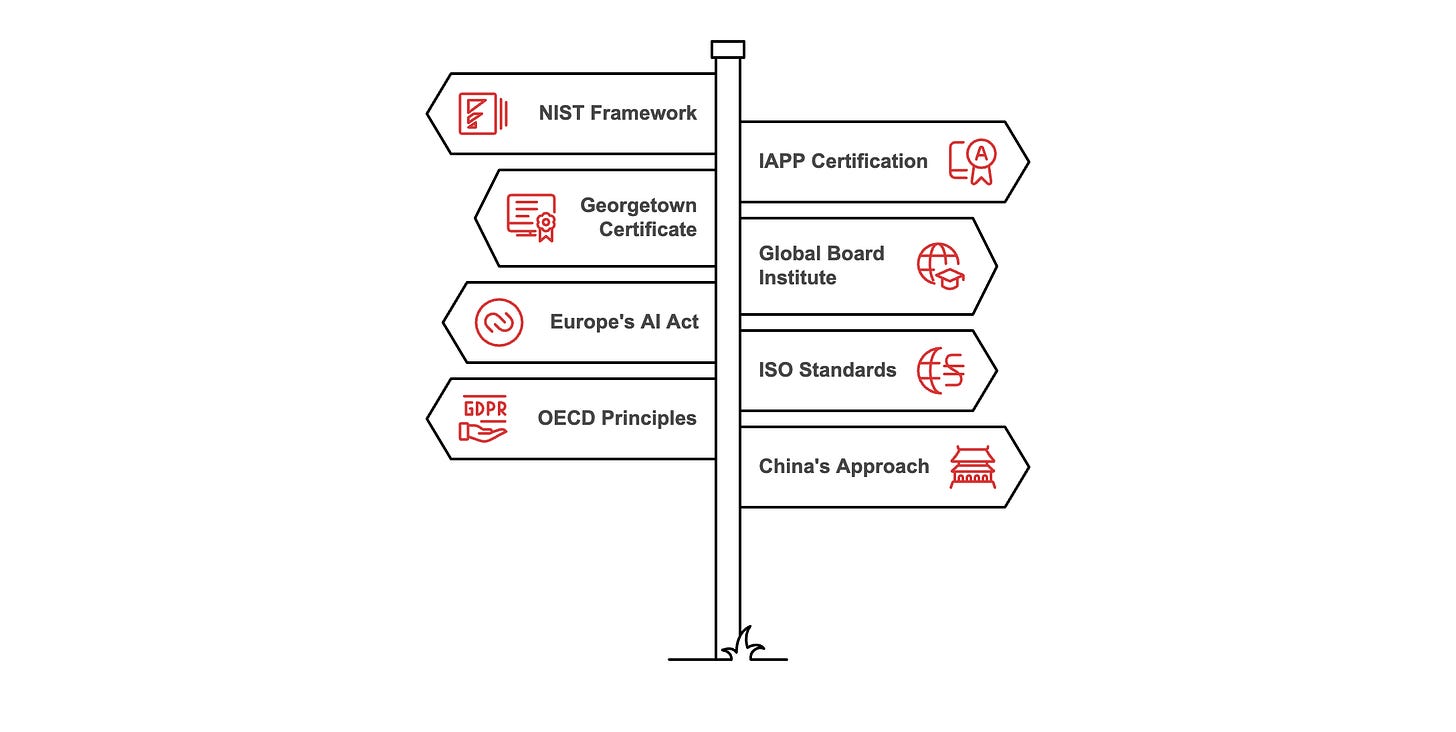Ultimate Guide to AI Governance for Companies That Want Results
The simple frameworks and steps that keep you compliant without killing innovation
Hey Adopter,
You'll get a practical roadmap for AI governance that explains what it is, why it matters now, and exactly where to start.
TL;DR: AI governance means having rules and safeguards for how your company uses AI tools. It just became mandatory thanks to new laws and massive fines. This guide covers the basics, common problems, and actionable steps to get compliant without drowning in bureaucracy.
Your comfortable AI ignorance just expired
Most companies treated AI governance like fire insurance. Nice to have, probably won't need it, someone else's job anyway. That ended on September 22, 2025, when Meta's Llama models got approved for US government agencies.
Think about it: if the government is using commercial AI tools in their daily work, your board will start asking tough questions about how you're managing yours. The European Union started issuing fines up to €35 million this year. All 50 US states introduced AI-related laws. China announced a 13-point plan for global AI oversight.
The "move fast and break things" era is over. The "move carefully or pay massive fines" era just began.
Why your AI projects keep stalling
Speed kills oversight, oversight kills speed
Here's the trap: 45% of organizations admit they prioritize getting AI tools to market quickly over setting up proper safeguards. That jumps to 56% among technical teams. Companies are building and deploying AI faster than they can create rules to govern it.
Your AI development moves at the speed of software updates. Your governance moves at the speed of committee meetings. Something has to give, and it's usually the safety measures.
You can't afford the right people or tools
The 2025 AI Governance Survey reveals the harsh reality. Only 36% of small companies have someone dedicated to AI governance. Just 41% provide annual AI training to their teams. Meanwhile, 34% say budget constraints are their biggest barrier, and 33% report they simply don't know enough internally to do this right.
Translation: you're flying blind because the instruments cost too much and you don't know how to read them anyway.
Your AI tools don't talk to each other
Your AI setup probably looks like this: ChatGPT for writing, some AWS tool for data analysis, Microsoft's AI for presentations, plus three different monitoring systems that don't share information.
Fifty-eight percent of organizations struggle to make their various AI systems work together. Another 55% are stuck doing manual checks and balances that make oversight feel like archaeology.
The frameworks that actually work
Start with government guidelines, not philosophy
The NIST AI Risk Management Framework became the go-to standard because it's practical and voluntary. NIST is the US government's tech standards body, and they created three simple documents: the basic framework, a how-to guide, and specific advice for generative AI tools like ChatGPT.
Skip writing a 200-page AI policy from scratch. NIST gives you a proven template that focuses on results, not academic theory.
Get certified or get left behind
The AI Governance Professional certification through IAPP is becoming the standard credential. It covers what business people need: basic AI technology, legal requirements, risk management, and ongoing oversight. Thirteen hours of focused training beats three months of confused committee meetings.
Georgetown University offers an online certificate that adds compliance depth. The Global Board Institute targets executives who need to sound credible in boardroom discussions without drowning in technical details.
Know which rules apply to you
Five frameworks matter globally: Europe's risk-based AI Act, America's NIST voluntary guidelines, international ISO standards, OECD principles for developed countries, and China's governance approach. Each serves different regions and company types.
Pick the one that matches your legal reality, not your philosophical preferences.
Get the complete implementation roadmap
Reading about frameworks is one thing. Actually implementing them is another.
Download our free Beginner's Guide to AI Governance and get the step-by-step checklists that turn theory into practice 👇
30-day foundation checklist - Everything you need to establish accountability and visibility in your first month
3-month framework builder - Specific actions to define standards, categorize risks, and create sustainable processes
Three ready-to-run exercises - 30-minute AI inventory, risk-ranking workshop, and accountability mapping session you can facilitate this week
Common pitfalls guide - The three biggest governance mistakes and exactly how to avoid them
Practical templates - Checklists and frameworks you can adapt immediately, no consulting fees required
Where AI oversight goes wrong
The monitoring blind spot
Only 48% of organizations actually watch their AI systems after they deploy them. That drops to just 9% for small companies. You're running AI tools in your business without knowing if they're working correctly, producing biased results, or being used inappropriately.
Imagine running a factory without quality control. That's most companies with AI right now.
The collaboration problem
Just 40% of companies occasionally include legal, HR, or ethics teams in AI decisions. Only one in five has formal governance that spans multiple departments. Your AI risks touch every part of your business, but your oversight lives in the IT department.
The fake emergency plan
Fifty-four percent claim they have plans for when AI goes wrong. Most have standard IT procedures with "AI" penciled in the margins. Real AI problems involve discrimination, privacy violations, manipulated results, and data leaks that your regular tech support can't handle.
What to do this week
Take inventory of what you have
List every AI tool your company uses. ChatGPT, Copilot, automated customer service, recommendation engines, hiring software. Map where your data goes. Identify who's responsible when something goes wrong. If you can't explain your setup to a colleague in five minutes, you don't have control.
Pick one simple framework to follow
Microsoft offers free responsible AI training that covers basic principles and practices without trying to sell you anything. Start there if you need immediate understanding without the complexity.
Make someone accountable
Assign one person to own AI governance outcomes. Not a committee. Not a working group. One person whose job includes "make sure AI doesn't create legal or business problems." Make it part of their performance review.
Start watching one thing
Pick your most important AI application. Set up basic monitoring to track if it's working as expected. Watch for unusual patterns in decisions. Log when it fails. You can't manage what you can't measure, and most companies aren't measuring anything.
AI governance isn't about slowing down your use of AI tools. It's about avoiding the expensive legal problems, bad publicity, and budget disasters that happen when AI goes wrong without proper oversight.
Adapt & Create,
Kamil







